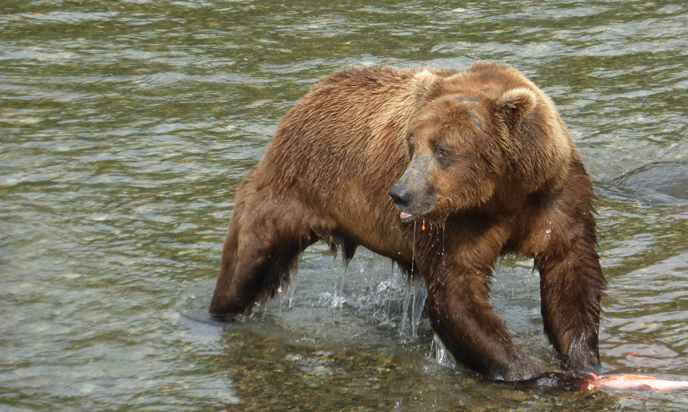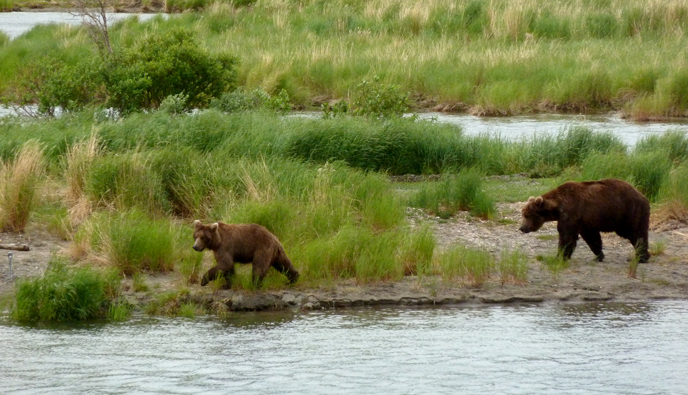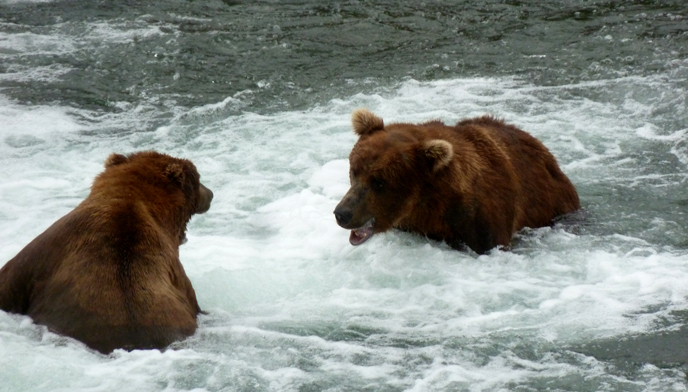
Bear 856 routinely demonstrates the characteristics of a dominant adult male. (NPS/M. Fitz)
Dominant male bears along the Brooks River gain many advantages over other bears. They can access the most preferred fishing spots when they choose, easily appropriate food from other bears, and have a higher likelihood of courting female bears and siring offspring. Gaining access to food allows bears to grow larger. Growing larger gives bears a greater chance to become reproductively successful.

856 (right) is so large and dominant that he faces little, if any, competition from other males for access to female bears. (NPS/M. Fitz)
Take bear 856, for example. He’s a mature and large adult male who is frequently seen at Brooks Falls. He has his pick of fishing spots and is unchallenged when courting females. He’s the most dominant bear seen along the Brooks River over the past few summers. But, how does a bear become dominant? What behavioral signs indicate a dominant bear?
Traits of a dominant bear:
- Large: Dominant bears are typically the largest bears.
- Male: The most dominant bears are adult males, most likely because males are 1/2 to 1/3 larger than females.
- Assertive: Dominant bears have an assertive disposition, move in an apparently confident manner through the river, and often ignore competing bears.
- Body and Ear Positioning: Dominant bears approach other bears with their head up and ears forward.
856 consistently demonstrates all of those physical characteristics and behaviors. In contrast, submissive or subordinate bears yield space and resources to 856 and bears like him. During an encounter, submissive bears also hold their head lower and position their ears back against their head. They are defensive and usually choose to avoid the approach of dominant bears.

856 (right) forces another large, dominant bear out of a favorite fishing spot. Note that 856's ears are upright and somewhat forward indicating he is assuming a dominant position while the other bears ears are back against its head. (NPS/M. Fitz)
Dominance simply means having power and influence over others. Dominant bears influence the movement and behavior of other nearby bears, and while they can’t command another bear to do anything they can use their size, strength, and power to force bears to yield or move away. 856 uses his size and disposition (he is more willing to assert himself around other bears) to gain access to the resources that he wants. Bears live in a competitive world where the biggest animals acquire and maintain greater access to the resources necessary to survive. In a bear’s world, being dominant is yet another way to win the game of life.
